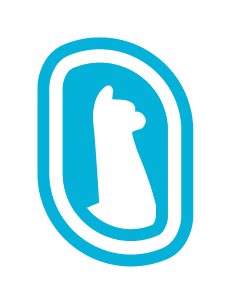“We got brainwashed into asking for roadmaps.”
– Seth Godin
The internet has been changing, and this time it’s moving in a direction that favors people already doing real work.
Modern search isn’t just about keywords, algorithms, or click-throughs anymore. AI-assisted systems are filtering for content that’s credible, structured, and tied to traceable human work. Instead of being trapped under Google’s monopoly, Internet 3.0 is decentralizing the web—pushing power away from gatekeepers and toward open protocols, blockchain-based provenance, and distributed knowledge networks. AI-assisted systems, especially those built on retrieval-augmented generation (RAG) models, are increasingly filtering for content that is credible, structured, and connected to traceable human work. In the next five years, this shift will give individuals and small creators more control over their data, identity, and reach, rewarding trust and authenticity over performance games.
That doesn’t just mean answering questions—it means proving you’re qualified to and showing how those answers hold up in real life.
For small businesses, consultants, and service providers, this change matters. The tools that once rewarded the loudest now reward the clearest. Marketing is no longer about gimmicks; it’s about authentic services, transparent results, and simply replicating your real-life presence online.
From Ranking to Retrievability
Google’s March 2024 update signaled a definitive shift. Search now deprioritizes sites that create “low-quality content at scale” or offer “pages made for search engines rather than people” (Google Search Central, 2024). But it’s not just Google. AI models like Perplexity, Claude, and GPT-4o don’t pull from surface-level content—they retrieve from sources that are original, accessible, structured, and connected to other credible people and sources. That’s what makes information retrievable.
And retrievability isn’t just about showing up in AI results. It’s about how easily people and systems can navigate your work, understand what you offer, answer their unique questions, and verify that it’s credible. This depends less on ad budgets and more on structure, and giving people what they’re looking for:
- Headers that form a logical hierarchy (H1 > H2 > H3)
- FAQ pages that actually answer questions, not just signal SEO intent
- Linked case studies, testimonials, and workflows that reinforce service claims
- Content tied to named entities (people, places, outcomes) that cross-reference other credible sources
- Clear and organized menus and navigation, along with strategic content and copywriting
- Authentic backlinks: your website showing up on clients’, partners’, and collaborators’ sites, reviews, interviews, guest pieces, and social platforms you already have relationships with
- You: your face, story, work, and ongoing relationships. Not hype—just your real story lived out
In other words, your site shouldn’t just be readable. It should be trustworthy—semantically, relationally, and structurally.
The Role of Schema (But Not a Silver Bullet)
Structured data, like schema markup, remains an effective tool for improving visibility. Used properly, it helps define your content’s type and relevance. FAQ schema, article schema, product or service schema, and organization markup all provide essential metadata that search engines and AI models can digest instantly.
But schema alone doesn’t compensate for weak content. Quality content can do well without it. Metadata only works when it wraps around material that’s already answerable, legible, and useful. If you can’t explain what you do, how it works, and why it matters without fluff, no technical markup can save it. Humans are how ideas spread, ultimately.
If the content and front end of your website, even without schema and alt tags, are solid, and it’s integrated into your business model, then the website will do well. This places more emphasis on design and usability than on technical nuances. Too often, however, a website fails, even with all the right elements, because the people behind it aren’t effectively connecting, serving, or managing their business. That’s the danger of marketing something you don’t authentically have.
“Marketing strategy will impact every piece of your business, and it should be tied to every piece of your business.”
– Brandon Andersen
Decentralized Search Is Already Happening
Search is no longer a one-way funnel through Google. Community platforms and AI are reshaping what results users see. In 2024, Reddit struck deals to feed its discussion content into both Google and OpenAI’s models (Reuters). In practice, this means entire forum threads and review platforms, with real user questions and answers, are also now accessible to AI chatbots and search engines. For businesses in tech, personal services, nonprofits, or startups, this trend matters. Customers often look beyond Google to communities: developer forums, industry groups, niche directories, podcasts, or social Q&A sites. These high-trust networks act as new “search panels” where your expertise can surface naturally.
- Search is relational, not linear. Instead of a simple query, results flow: AI and users piece together information from multiple sources. Presence on relevant forums, blogs, and industry sites increases your chances of being “rediscovered” by these systems.
- Trusted platforms expand your surface area. High-quality niche channels—Reddit threads, podcasts, guest blog articles, industry directories—are increasingly indexed by AI and search. Being active or featured there puts your name into the cycle of recommendations. (As one SEO analysis notes, mentions across respected sites signal to search engines that your business is legitimate and trustworthysearchatlas.com.)
- Real reviews and conversations become “citations.” Authentic client testimonials, case studies, and documented projects now help answer user queries directly. In effect, each genuine review or success story is part of the information AI can cite.
- Map trust networks back to you. Don’t just scatter content; connect it. If your salon is mentioned in a local guide, or your nonprofit leader is interviewed on a podcast, make sure those links and references lead back to your main site. This creates a web of credibility and accesibility.
In short, visibility today means mapping your real work onto the places people already trust, and ensuring those platforms point back to you. This isn’t about chasing every new social app; it’s about integrating with established communities. AI and modern search simply retrieve the most coherent, well-connected answers, so being part of that ecosystem gives you an automatic lift.
“Smart brands don’t just ride trend shifts. They start them.”
– Ann Handley
Systems Thinking, Not Just Content Planning
Modern marketing isn’t a series of disconnected campaigns; it’s an infrastructure. The most visible businesses build systems, not just pages. Think of your marketing as a visibility system:
- A centralized content hub: Your website should be the heart where everything connects. All your services, stories, and proof points live there.
- Clear internal link architecture: Services should link to outcome pages, team bios, blogs, and FAQs in a logical hierarchy. Users (and AI) should navigate easily from one idea to the next – for example, from a “custom software” service page to a case study or a “how it works” article.
- External validation signals: Offline credibility belongs online. Guest posts, interviews, press mentions, directory listings, and positive reviews are like votes of confidence. They send a signal that experts and customers trust you, reinforcing what your own site says.
- Technical hygiene for machines: Use proper page structure (H1, H2, H3 hierarchy), add relevant schema markup (FAQ, Service, Article schema, etc.), and ensure pages load quickly. These details help algorithms parse and index your content. However, remember that technical tweaks only help after your content is answerable and useful. Even Google’s latest update emphasizes that the goal is “prioritizing helpful content” – not gimmicks (Developers.google.com).
- Integrated with your business: Ultimately, this infrastructure should mirror how your business actually operates. If you emphasize customer success or sustainability in real life, that should come through in your site structure, blog posts, and social links. Marketing fails when you try to put a veneer on something you don’t really have.
Our approach embeds these principles at the project level. Every redesign or content plan turns a service page into an ecosystem: it’s linked to proof (testimonials, portfolio items, team expertise), to relevant answers (FAQs, how-tos), and to networks (partner sites, social profiles). The result is a site that’s not just a brochure, but a retrievability machine for real human needs.
Why This Is Simpler Than It Sounds
There’s a myth that “AI SEO” requires expensive tools or magic keywords. In reality, retrievability is about coherence and authenticity. If you already do great work, you likely just need to document it clearly. Ask yourself:
- Are you answering real customer questions? Check your support threads, interviews, or brainstorming with clients. Turn those FAQs into solid, human-readable answers on your site.
- Have you documented your actual process and results? Case studies, project galleries, or “behind the scenes” posts show how you solve problems. That content is gold for people (and for machines).
- Is everything linked up in one place? Your offerings, your stories, and your outcomes should all tie back to your main hub. No orphan pages – every piece of content points to or from others meaningfully.
- Are you referenced outside your site? No one finds you if you only talk to yourself. Encourage satisfied clients to mention you (reviews, testimonials, shout-outs), collaborate with peers on guest content, and be part of industry conversations. These real-world links validate your expertise.
In fact, traditional metrics are changing: a 2024 study found nearly 60% of Google searches end without a click (Searchengineland.com). In other words, being cited matters more than being clicked. A small team that consistently publishes useful answers and gets referenced by others will naturally ride these new waves, even without a website, like many businesses with only a social media platform as their main hub.
When all these pieces are aligned, the system almost runs itself. Your clear, connected content becomes the easiest answer for both people and AI. The internet shrinks in the best way – there’s less noise, and your genuine voice becomes the loudest signal.
“Focus on the core problem your business solves and put out lots of content and enthusiasm and ideas about how to solve that problem.”
– Laura Fitton
What Surfaces, Sticks
In the AI-driven web, legibility wins. Search engines and chatbots reward clarity, structure, and trustworthiness. The easier your information is to parse and verify, the more it will “stick” as a recommended answer. This isn’t an AI hack – it’s just good practice.
Keep your online presence true to your real-world strengths. Publish the knowledge you actually have, support it with evidence, and weave it into the fabric of networks people already use. In doing so, you build a visibility system where your brand naturally surfaces to those who need it – without relying on sheer ad spend or hype.
That’s the new infrastructure of search.




